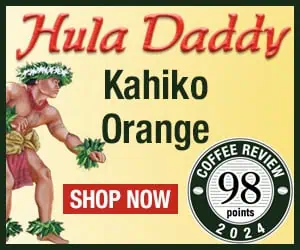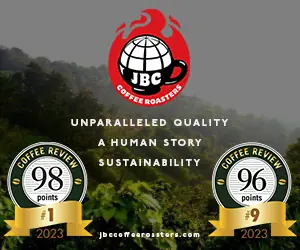There are likely to be two categories of reader for this article: Those who know something about Fair Trade coffees (and who probably hold strong opinions on the subject) and those who don’t.
For those who don’t, Fair Trade certification is an assurance from an internationally recognized third-party certifier (in the United States the certifier is TransFair USA) that the green coffees contained in a package bearing the TransFair seal have been purchased only from small-holding farmers organized in democratically run cooperatives who have been paid at least a minimum formula-based “fair” or economically sustainable price for their coffees, and who have upheld certain environmentally and socially sustainable standards while producing those coffees.
The Controversy
Ever since Fair Trade coffee certification was successfully launched some years ago it has provoked challenge and controversy. The anti-Fair-Trade critique breaks down into three kinds of accusation: 1) Fair Trade coffees are not as good in the cup as non-Fair-Trade coffees; 2) the formula pricing for Fair-Trade coffees is not sustainable in the long run because it artificially defines price rather than letting the coffee market determine price; and 3) sometimes people cheat the system and sneak in non-Fair-Trade coffees in place of genuine Fair-Trade-certified coffees. Frankly, I am going to dismiss the last accusation as trivial; whatever abuses occur are minor and the Fair-Trade system appears to me to be sufficiently transparent to effectively discourage them. Later in this article I take a crack at the free-market-works-better side of the argument.
The Cup: Good and Various
In the meantime, it would seem that what might matter most to an idealistic but coffee-loving consumer is the quality of the coffee. How much quality and distinction do socially idealistic coffee lovers lose if they buy only Fair-Trade certified coffees?
Judging from the evidence of this month’s sampling, very little. Out of the twenty-four bona-fide, TransFair-certified coffees we cupped, eight emerged with ratings of 90 or higher. Furthermore, the over-90 crowd included a wide range of coffee types and origins, including a spectacular floral-style East African coffee (Allegro Rwanda Karaba, 96) together with several more fine variations on the East-African-style wet-processed cup including a Johnson Brothers Coffee Yirgacheffe at 93 and another Rwanda from Willoughby’s Coffee at 91, an impressive dry-berry style Kenya from Terroir Coffee (93), a classic pungently earthy Sumatra from The Roasterie (90), a dry-processed Brazil from Barefoot Coffee (90) and a sweetly low-key Nicaragua from Batdorf & Bronson (90). The PT’s Peace blend (90) displayed gentle echoes of East Africa and Central America.
Still Some Limitations
True, what was absent from this cupping were big, brightly acidy, pure-profiled Latin American coffees, like those from Costa Rica or parts of Colombia, for example. And name-dropping consumers who want to buy Fair-Trade certified Konas or Jamaica Blue Mountains will not find them, though on the basis of cup alone they would be well-served by this month’s roundly gentle Batdorf & Bronson Nicaragua.
Generally, Fair-Trade is a movement that works best in origins dominated by small-holding peasant growers, particularly origins that have attracted aid programs to help organize those small-holding growers into cooperatives and improve quality, as has happened in Rwanda, the source of three of the 90+ coffees in this month’s cupping.
Nevertheless, most coffee lovers should be able to find Fair-Trade coffees that both satisfy with quality and excite with distinction while satisfying their need to feel their purchase helped growers and their families survive with dignity.
A Perspective on the Free-Trade vs. Fair-Trade Argument
The various free-trade-is-better arguments launched against Fair-Trade certification and pricing are in detail too complex to take on here, but essentially I fail to see how Fair-Trade certification undermines in any practical way the discipline of the market, or the tendency for green-coffee buyers to reward quality and distinctiveness with greater demand and higher prices. Essentially, Fair-Trade certification is simply an entry ticket to a niche market. Within that market, coffees that for whatever reason — scarcity, name, quality, distinctiveness — can attract higher prices do attract them, prices that often are considerably higher than the Fair-Trade minimum. Coffees that do not attract buyer interest simply end up not being sold as Fair Trade and enter the coffee supply stream at conventional prices.
From my perspective, what Fair-Trade certification does do for cooperatives of small-holding growers is give them a better shot at competing in the high-end specialty coffee market, a market that otherwise might be dominated by larger farms in regions with more developed infrastructures. Fair-Trade certification has become part of a tool-kit for development of new, distinctive specialty coffees in regions that have excellent growing conditions for fine coffees but little of the social or physical infrastructure needed to produce them: Rwanda, for example. Many organizations and individuals, including the growers themselves, have contributed to the emergence of splendid Rwanda coffees like this month’s 96-rated Allegro Karaba, but certainly the market edge provided by Fair-Trade certification helped.
One Last Bit of Controversy
Two of the coffees reviewed here are described on the package as “Fair Trade” or “Fairly Traded,” but judging by the absence of trademarked seal are not certified Fair Trade by TransFair USA, the sole American certifier for the Fairtrade Labeling Organizations International (FLO). Instead they bear the seal of the Fair Trade Federation, a membership (rather than certifying) organization devoted to “providing fair wages and good employment opportunities to economically disadvantaged artisans and farmers worldwide” (from the website www.fairtradefederation.org). As a membership organization, the Fair Trade Federation pursues its goals through promoting links, networking and resources to its producer and consumer members rather than through certification.
I would assume TransFair USA (www.transfair.org) is uncomfortable with this ambiguity, given that TransFair has arguably performed the heavy lifting in terms of exposing the public to the Fair-Trade concept and certification, activities that are supported by the fees paid to TransFair by participating producers, importers and roasters. Whether the use of the Fair Trade Federation seal (it looks a lot like the TransFair seal) and claims made by the roasters who offer these uncertified coffees are a slippery duplicity taking unfair advantage of someone else’s investment in developing public awareness or a justifiable alternative approach to the same goals is a call concerned consumers will need to make.
2007 The Coffee Review. All rights reserved.










